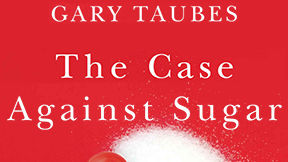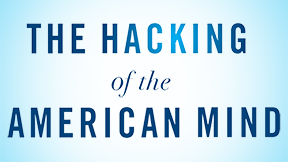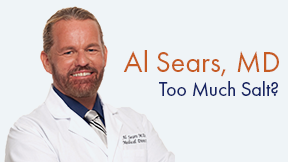 Gary Taubes ‘The Case Against Sugar’ Part 5
Gary Taubes ‘The Case Against Sugar’ Part 5
Transcription of Gary Taubes’ YouTube video, The Case Against Sugar, by Elizabeth Reedy
Key takeaways from Part 4
- Sugar is like a drug that shows no immediate side effects.
- Taubes made several references to the connection between consuming sugar and pleasure with this telling statement: . . . once the drug became identified with pleasure, how long before it would be used to celebrate birthdays, a soccer game, good grades in school?
- As sugar became more available in Europe, it was added to all sorts of concoctions. Later in the U.S., sugar was added to the original Coca-Cola formula to mask the bitterness of cocaine and caffeine.
Begin at 49:31
The removal of cocaine in the first years of the 20th century seemed to have little influence on Coca-Cola’s ability to become, as one journalist described it later, “The sublimated essence of all that America stands for, the single most widely distributed product on the planet and the second most recognizable word on the earth, with okay being the first.”
It’s not a coincidence that John Pemberton, the inventor of Coca-Cola, had a morphine addiction that he’d acquired after being wounded in the Civil War. Coca-Cola is one of several patented medicines he invented to help wean him off of the harder drug. [Quoting Pemberton] “Like Coca, Kola enables its partakers to undergo long fast and fatigue,” read one article in 1884. “Two drugs, so closely related in their psychological properties cannot fail to command early universal attention.”
As for tobacco, sugar was and still is a critical ingredient in the American blended-tobacco cigarette, the first of which was Camel, introduced by R. J. Reynolds in 1913. It’s this “marriage of tobacco and sugar,” as a sugar-industry report described it in 1950, that makes for the “mild” experience of smoking cigarettes as compared with cigars and, perhaps more important, makes it possible for most of us to inhale cigarette smoke and draw it deep into our lungs.
It’s the “inhalibility” of American blended cigarettes that made them so powerfully addictive—as well as so potently carcinogenic—and that drove the explosion in cigarette smoking in the U.S. and Europe in the first half of the 20th century, and the rest of the world shortly thereafter, and, of course, the lung-cancer epidemics that have accompanied it.
Here’s an interesting story. About fifteen years ago I read a book called Sugar Blues. Do any of you remember that? William Dufty, Gloria Swanson’s husband, wrote this book. In this book he talks about sugar and tobacco, and about how the sugar in the tobacco leaves is critical to the success of the American cigarette.
For years after that, I tried to confirm that story and I just couldn’t find any evidence to do it. Two things happened. The internet grew and grew, and more and more sources of evidence got scanned into the computer, and you could search through them.
I had gotten a grant from the Robert Wood Johnson Foundation to write this book on sugar, and part of the grant was to uncover what was the sugar industry’s influence on science in the 70s. I could feel it in the research that in the same way they discover planets by seeing the influence of another planet.
Also, back in 2011 I was lecturing at a bookstore in Denver. I had done nothing on the book, I had completely stalled. I had started my not-for-profit instead. After the lecture, this woman, Kristen Kerns, comes up to me and she says she’s a dentist there in Denver. She works in a lower-class clinic, and she deals with diabetics with terrible teeth all day long.
She read my book Good Calories, Bad Calories, and she became obsessed with it. Then she went to a lecture on dentistry and chronic disease, and she heard a speaker from the American Diabetes Association say that they didn’t know why diabetics had such poor teeth. Kristen was horrified, and she started investigating the sugar industry.
She used Google and she found a cache of sugar industry documents which were from a defunct sugar industry company that had gone out of business and donated its archives to Colorado State University. Then she drove up to Fort Collins, and she started looking through the boxes. She pulled out the first one and it was labeled “Confidential. Sugar industry documents.”
She tells me this story after my talk, and my eyes light up like the big bad wolf. It scared the hell out of me. I was like, “I want everything you’ve got, put it in my book and take credit for it.” I learned that Kristen’s sense of humor was different than mine. Anyway, we ended up working together. We did a cover story for Mother Jones, which helped Kristen get a job at UCSF as a researcher.
If you read the New York Times, you’ll see she has a couple of front-page stories based on her research. I also talk about her research in the book, and I’m proud to have played a role in her life, though I still regret having scared her so much that first day.
One of the documents that Kristen found is this document written by a sugar industry executive in 1954 called “The Marriage of Sugar and Tobacco.” So, after World War II, the sugar industry and all of America starts going on a diet, in part because artificial sweeteners become readily available and allowed people to cut calories. People were arguing that sugar is fattening.
The sugar industry sees the writing on the wall even then, and they realize they have to start diversifying their products. They have to find other products that they could be using, and they are proud of the fact that, in 1954, sugar has played such a major role in the tobacco industry. They’re bragging about it in this document, and they had no reason to think that it wasn’t a great thing. It was more American capitalism at work.
And so, it’s all laid out in this document, including the references to FDA reports and the names of tobacco company executives who could confirm it. This didn’t really fit into my book because my book is about heart disease and diabetes, not the role of sugar and tobacco. But how could I leave it out?
At one point I had a chapter called The Marriage of Sugar and Tobacco, and I’d given it the number two and a half. Have any of you seen the movie Being John Malkovich? There was a… Well, this chapter ended up being Chapter 3. My editor doesn’t have the same sense of humor I do, either.
The other interesting thing is that this had actually been covered by a brilliant historian of science at Stanford, Robert Proctor, who had written a 700-page exposé of the sugar industry called Golden Holocaust that is relentlessly reported.
He wrote it based on the tobacco industry documents, and he came upon this article in the tobacco industry documents. So it doesn’t really fit into his book, but he wrote about it anyway, probably because it’s such an amazing story about the role of sugar and tobacco.
I was still able to get the scoop in this book, first of all because Robert Proctor’s book is 700 pages long, and it’s hard to get through. I find myself talking about other people’s books, other people’s set of good calories and bad calories. It’s good but it’s long. Anyway, a little more reading and then we’ll go to Q & A’s.
Unlike alcohol, which was the only commonly available psychoactive substance in the Old World until sugar, nicotine and caffeine arrived on the scene. The latter three had at least some stimulating properties and so offered a very different experience, one that was more conductive to the labor of everyday life.
These were the “eighteenth-century equivalent of uppers,” writes the Scottish historian Niall Ferguson. “Taken together, the new drugs gave English society an almighty hit. The Empire, it might be said, was built on a huge sugar, caffeine and nicotine rush—a rush nearly everyone could experience.”
Sugar, more than anything, seems to have made life worth living (as it still does) for so many, particularly those whose lives were absent from the kind of pleasures that relative wealth and daily hours of leisure might otherwise provide.
As early as the twelfth century, one contemporary chronicler of the Crusades, Albert of Aachen, was describing merely the opportunity to sample the sugar from the cane that the Crusaders found growing in the fields of what are now Israel and Lebanon as in and of itself “some compensation for the sufferings they had endured.” “The pilgrims,” he wrote, “could not get enough of its sweetness.”
As sugar, tea, and coffee instigated the transformation of daily life in Europe and the Americas in the seventeenth and eighteenth centuries, they became the indulgence that the laboring classes could afford; by the 1870s, they had come to be considered necessities of life.
During periods of economic hardship, as the British physician and researcher Edward Smith observed at the time, the British poor would sacrifice the nutritious items of their diet before they’d cut back on the sugar they consumed.
“In nutritional terms,” suggested three British researchers in 1970 in an analysis of the results of Smith’s survey, “it would have been better if some of the money spent on sugar had been diverted to buy bread and potatoes, since this would have given them very many more calories for the same money, as well as providing some protein, vitamins and minerals, which sugar lacks entirely.”
“In fact, however, we find that a taste for the sweetness of sugar tends to become fixed. The choice to eat almost as much sugar as they used to do, while substantially reducing the amount of meat, reinforces our belief that people develop a liking for sugar that becomes difficult to resist or overcome.”
Sugar was “an ideal substance,” says Mintz. “It served to make a busy life seem less so; in the pause it refreshes, it eased the changes back and forth from work to rest; it provided swifter sensations of fullness or satisfaction than complex carbohydrates did; it combined easily with many other foods, in some of which it was also used (tea and biscuit, coffee and bun, chocolate and jam-smeared bread)…. No wonder the rich and powerful liked it so much, and no wonder the poor learned to love it.”
What Oscar Wilde wrote about cigarettes in 1891, when that indulgence was about to explode in popularity and availability, might also be said about sugar: It is “the perfect pleasure. It is exquisite, and it leaves one unsatisfied. What more can one want?”
Thank you. I think I’ll leave it at that. Thank you.
Q&A: One man from the audience asks if we would be healthier or less healthy by using artificial sweeteners instead of sugar. Taubes’ response is that the science is inconclusive. He cited studies where the researchers use lean college students as guinea pigs to see how artificial sweeteners affects them. He says that those results may have different outcomes for middle-aged people, and especially those with medical issues.
My Comments: I was intrigued by Taubes’ comments about the use of sugar along with nicotine and caffeine as the “uppers” of the 17th-18th centuries in Europe and America. They helped to give people a lift from the drudgeries of a hard life. I wonder if things aren’t all that much different in the 21st century.
Rebecca, for example, looks forward to her morning and afternoon coffee breaks at her office. That’s time to get a cup of sweetened coffee and a Danish or some other pastry that a colleague brought to their office. End
 The Hacking of the American Mind—Report Number 3
The Hacking of the American Mind—Report Number 3 The following is a reprint of a letter of the Editor from Ron Iverson, President of the National Association of Medicare Supplement and Medicare Advantage Producers.
The following is a reprint of a letter of the Editor from Ron Iverson, President of the National Association of Medicare Supplement and Medicare Advantage Producers. Note from Lance: This is a reprint of an article by Dr. Sears with my comments after.
Note from Lance: This is a reprint of an article by Dr. Sears with my comments after. by Ron Iverson, President of the National Association of Medicare Supplement and Medicare Advantage Producers. Inc. and Lance D. Reedy
by Ron Iverson, President of the National Association of Medicare Supplement and Medicare Advantage Producers. Inc. and Lance D. Reedy By Lance D. Reedy
By Lance D. Reedy